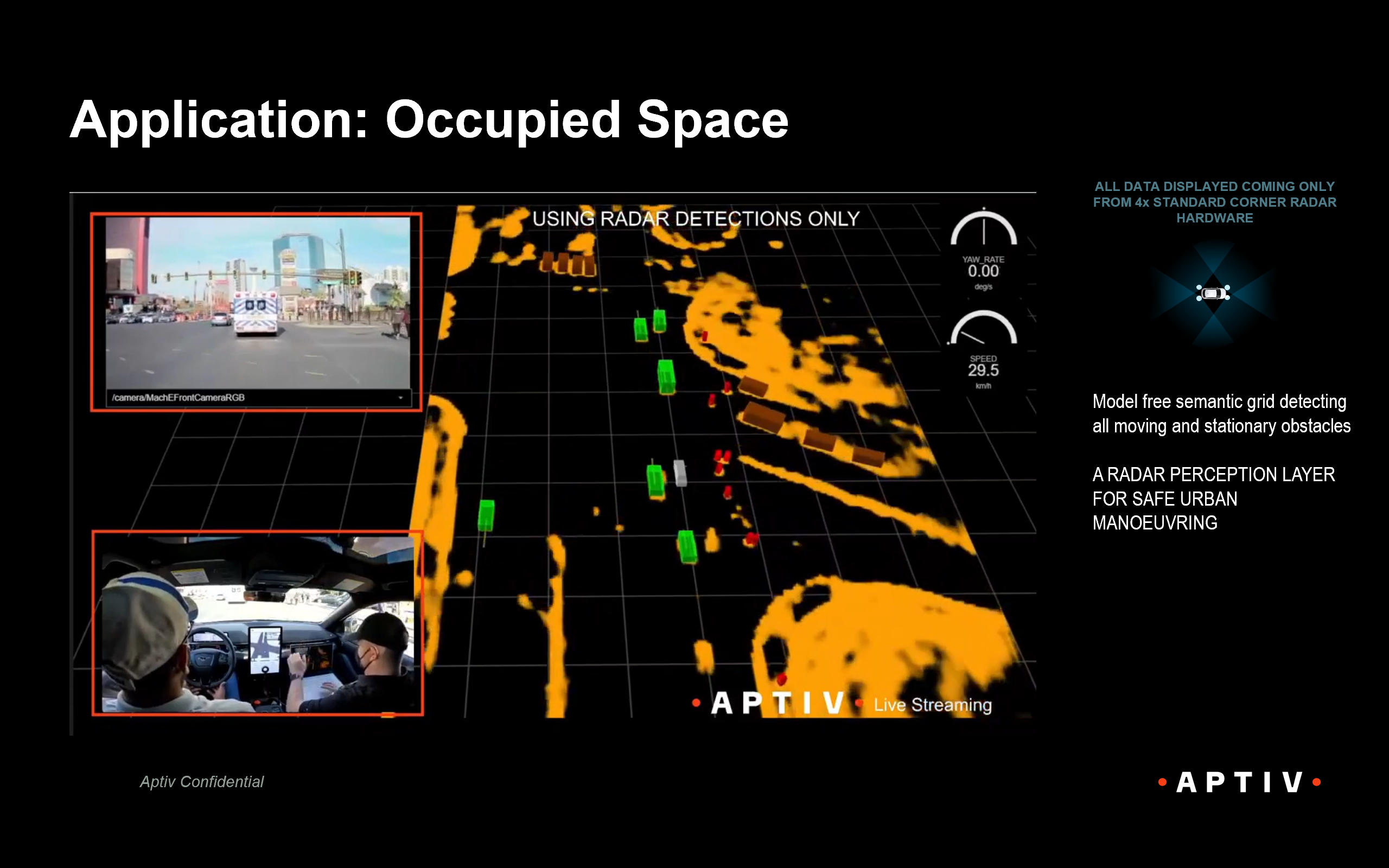AI/ML Gets the Most From Radar
Aptiv strives to create a safer future of mobility, with zero fatalities, zero injuries and zero accidents. Achieving that goal means ensuring that every vehicle produced is equipped with cost-effective ADAS capabilities that work in a wide range of weather and road conditions.
Aptiv’s approach to ADAS (advanced driver-assistance systems) offers the broadest possible operating performance and provides a compute- and power-efficient solution that democratizes advanced safety features by lowering system costs – while operating 25 percent more cost-effectively and 65 percent more energy-efficiently than camera-centric systems.
Today, we can take automotive radar even further. By enhancing radar with artificial intelligence (AI) and machine learning (ML), Aptiv has developed a groundbreaking radar-based object-classification system that achieves five times better performance on a broad set of radar sensors.
Accurate classification powers ADAS
Classification is how vehicles tell what an object is and better predict how it will behave, which is essential for all levels of ADAS-based decision-making and autonomous driving.
For example, a bicycle and a motorcycle have a similar shape and size but operate very differently. For a vehicle to respond to them appropriately, it must be able to tell them apart.
Classification has traditionally been the domain of compute- and power-intensive vision-based systems. However, vision-based systems include unnecessary information, such as the color of an object or whether there are words written on it. In these systems, the extra data has to be discarded so that ADAS can draw relevant conclusions.
In contrast, radar can help get to those conclusions more directly — and its performance is superior in poor weather conditions, such as snow, fog and heavy rain, and is not affected by lighting issues such as darkness or direct sunlight.
Making improvements through software
Aptiv’s advanced machine learning enables a more efficient approach to determine whether an object is another vehicle, a pedestrian, a bicycle or some other vulnerable road user and to thus draw better conclusions on how those objects are likely to behave. This technology provides a huge opportunity to optimize existing hardware while taking advantage of radar’s established strengths, such as its ability to work in cluttered environments, see around obstacles and utilize low-level radar effects to improve height estimation.

Radar view from inside a car
This machine learning technology has been included in recently launched production vehicles that will receive over-the-air software updates in 2022 and beyond, enabling all vehicles on the platform to enhance their capabilities over time.
This is just the latest in a long line of radar developments at Aptiv. We were the first company to put radar on a car, and we continue to conduct intensive research and development to ensure that we can provide the greatest value to our OEM customers while making the world a safer place for everyone.